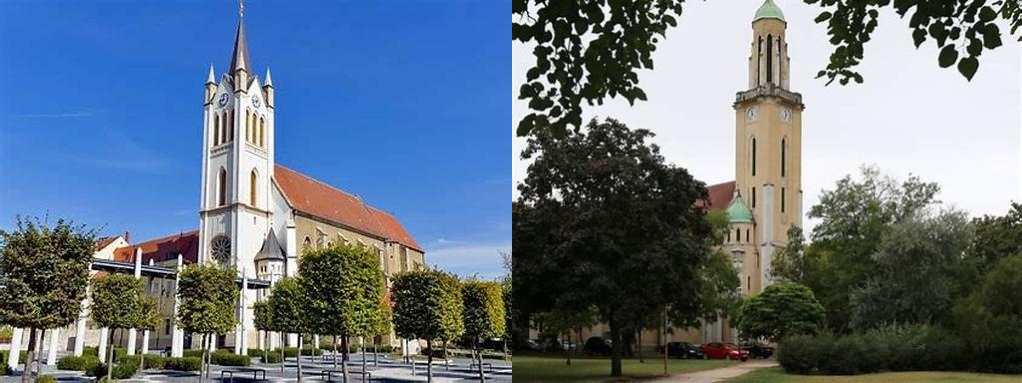
Magyarok Nagyasszonya-plébániatemplom, or as some prefer to call it, the Church of Our Lady of the Hungarians, sits quietly on the picturesque square in Nyíregyháza, embracing those who stroll by with a blend of history, tranquility, and architectural grandeur. You don’t have to be an ardent lover of churches to be drawn to its inviting red brick walls—it’s a space where you can slow down, escape the city’s daily hum, and reflect for a moment on the stories etched into every arch and aisle. If you find yourself wandering in eastern Hungary, this impressive building deserves a thoughtful visit.
Start with a bit of its curious history. The genesis of the church traces back to the latter years of the 19th century, a period when Nyíregyháza was experiencing a renaissance. Growing quickly, the Catholic community soon outgrew its modest sanctuary. It was under the guidance of the visionary priest János Oláh and with plans drawn up by the renowned architect István Kiss, that construction on a new grander edifice began in 1902. The result: a Gothic Revival wonder that still stuns the modern visitor with its soaring steeples and ornate façades. Peeking up at those bold lines and pointed arches, you can easily imagine the optimism and energy buzzing in this young town over a century ago.
Step inside, and your eyes are immediately drawn upward. Light filters through stained-glass windows designed by the celebrated Hungarian artist Miksa Róth, whose work graces many of the nation’s grandest spaces. The kaleidoscope of colors cast across the pews creates a lively play of color and shadow that changes through the day. Take a moment to listen for the echo of the magnificent pipe organ—built in 1912—still occasionally filling the sanctuary with music during Sunday Mass or special concerts. The harmony between the church’s acoustics and its art is something that slides under your skin, slow and subtle.
Beyond the awe-inspiring main nave, there are little details waiting to be noticed: hand-painted altars, elaborate pulpit carvings, memorials to past priests and parishioners, and statues of saints. The high altar, carved from Italian marble, glimmers with details that reward those who approach it closely. It’s hard not to feel a connection to the many generations who have knelt here—families gathered for baptisms, weddings celebrated under soaring arches, prayers whispered in both joy and grief.
But what truly sets the Magyarok Nagyasszonya-plébániatemplom apart is its relationship with the people of Nyíregyháza. This church isn’t only an artifact of the past; it’s a living part of the city, woven into everyday life. Week after week, locals gather in its pews, light candles for loved ones, and participate in community events. The church square hosts open-air concerts and festivals, and the bells still mark the rhythms of the old town, bridging the day with tradition.
For travelers hoping to experience Hungary beyond Budapest’s grandeur, a trip here offers a deeply human encounter. Walk the short route from the city center. Linger in the shade of the churchyard. Let the past and present overlap for a while. Whether you’re an architecture devotee, a keen observer of culture, or simply someone seeking a peaceful pause, the Magyarok Nagyasszonya-plébániatemplom has something worth discovering—no marketing pitch required.





